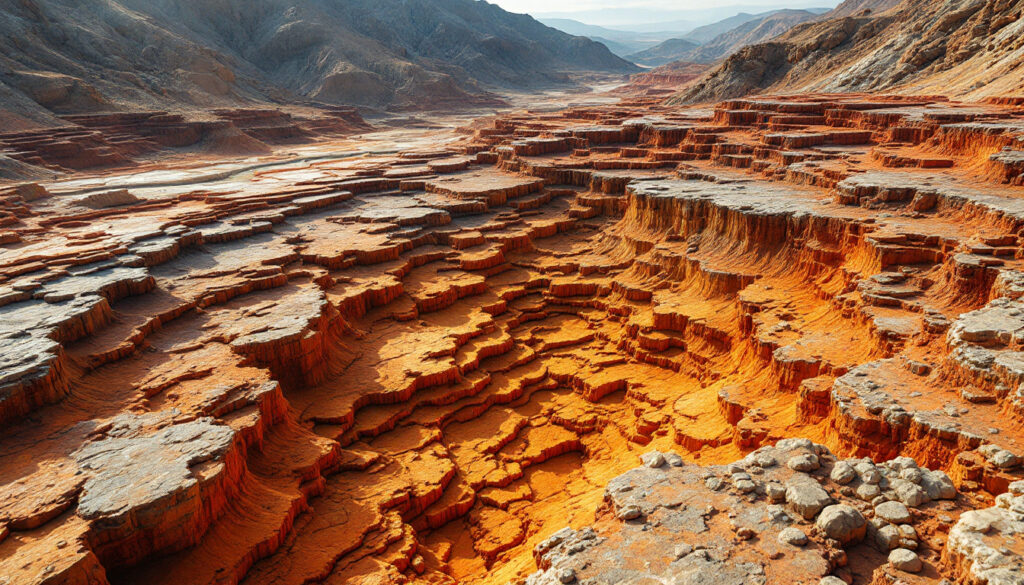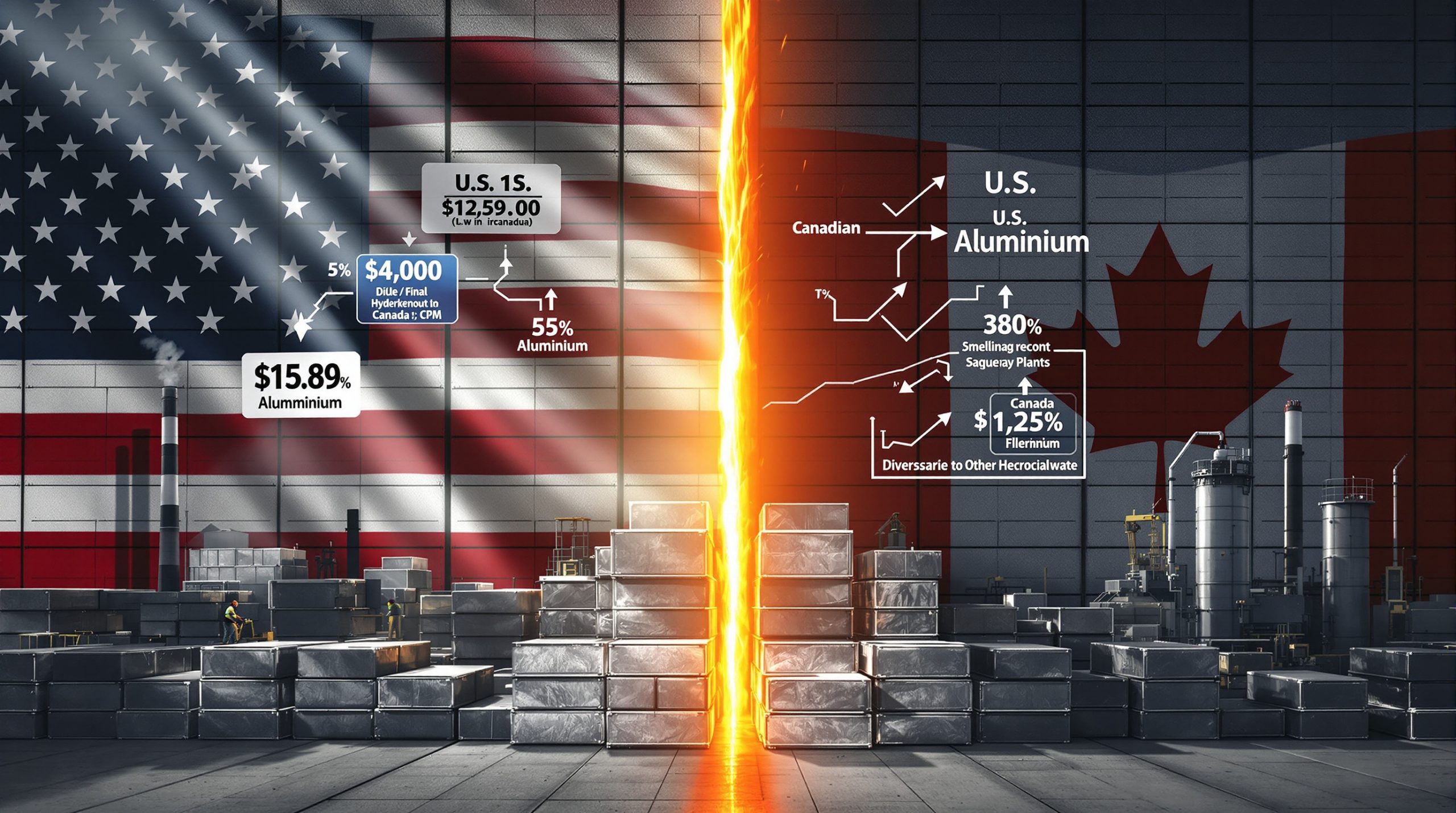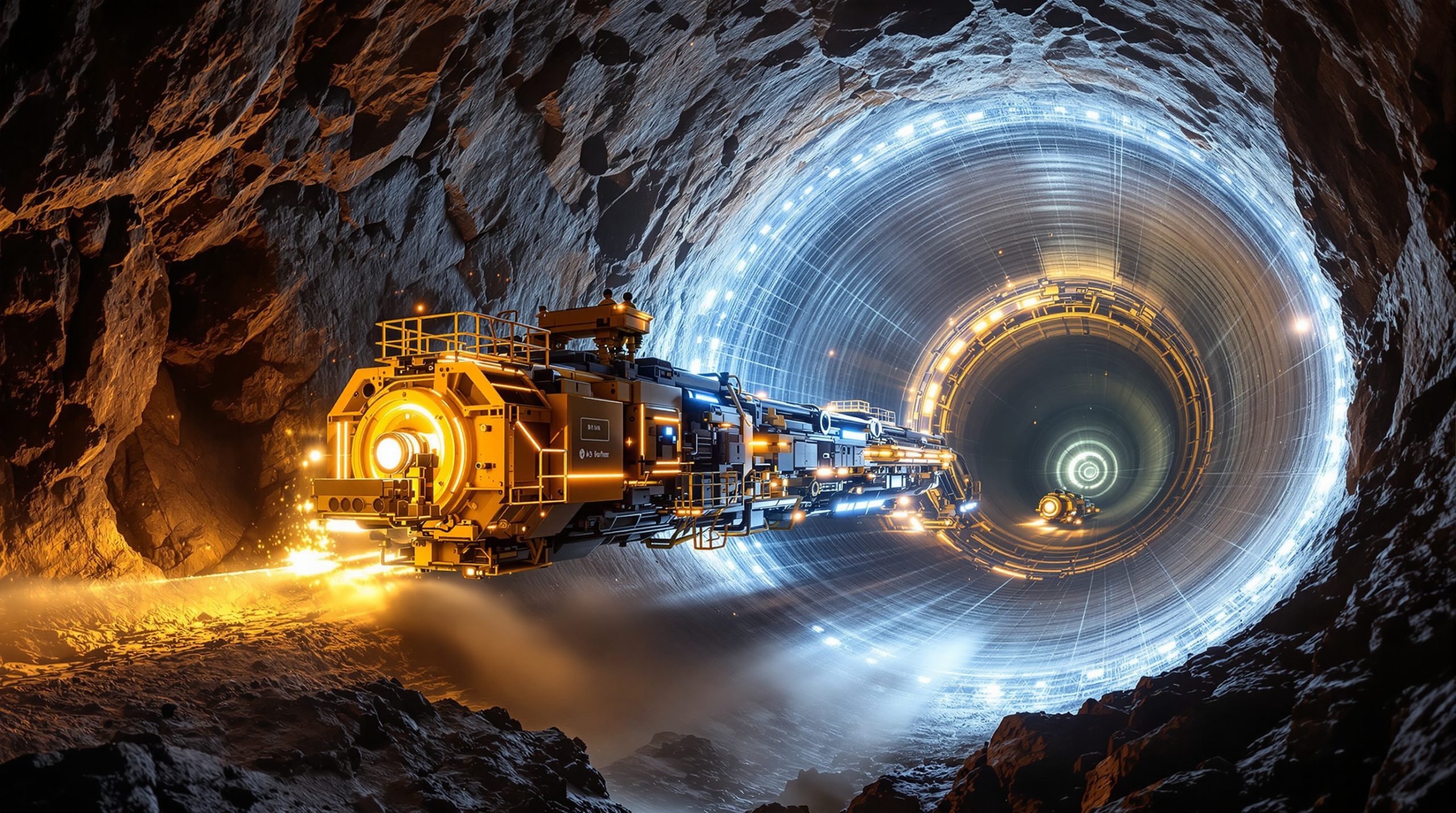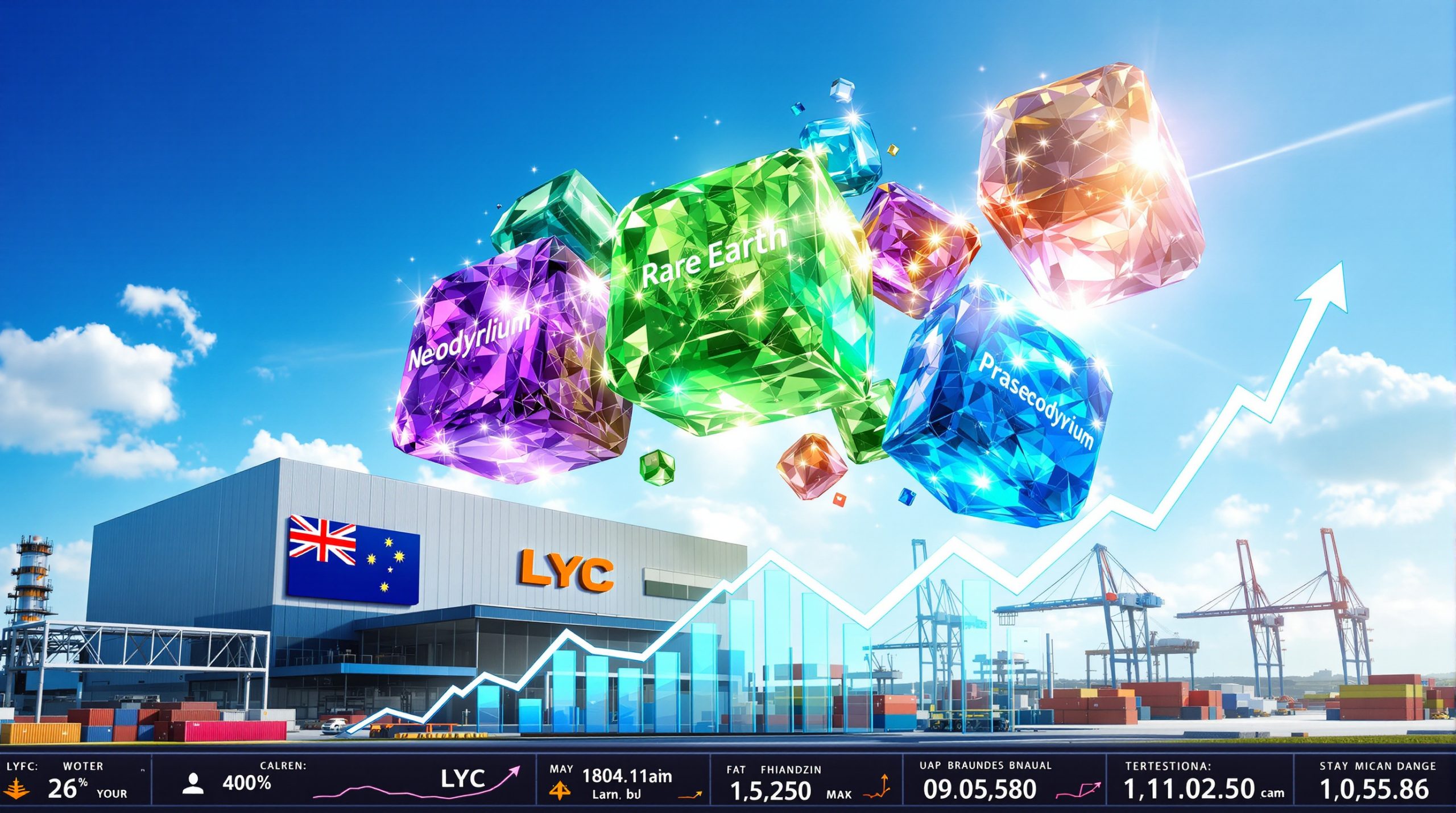The Importance of Gossans in Mineral Exploration
Gossans, the oxidized and weathered remnants of sulfide mineral deposits, have long served as critical indicators in mineral exploration. These iron-rich formations, characterized by distinctive boxwork textures and coloration, provide geologists with visible clues about subsurface mineralization. Historically, gossans guided prospectors to major discoveries like Australia's Broken Hill deposit, while modern techniques combine traditional field observations with advanced geochemical and geophysical methods. This report explores the geological significance of gossans, their historical and contemporary applications, associated mineralization types, and the challenges and technologies shaping their use in mineral exploration strategies.
What Are Gossans and Why Are They Important?
Gossans are surface expressions of oxidized sulfide deposits, formed through prolonged weathering and leaching processes. Their iron oxide and hydroxide composition creates vivid hues ranging from red to black, while boxwork structures—cellular or honeycomb patterns—reveal the original sulfide mineral morphology. These features make gossans indispensable markers for identifying potential ore bodies beneath the surface.
Defining Characteristics of Gossans
Gossans are distinguished by their high iron content, derived from the oxidation of pyrite, chalcopyrite, and other sulfides. The leaching of soluble minerals like copper and zinc leaves behind residual iron oxides, forming hardened caps resistant to erosion. Boxwork textures, such as diamond mesh or cellular patterns, reflect the original crystal structure of sulfides, providing clues about the ore deposit geology.
For example, chalcopyrite gossans exhibit coarse, angular boxwork, while bornite-rich gossans display triangular or curved textures. Depths can exceed several hundred meters, though oxidation intensity decreases with depth, transitioning into unweathered sulfide zones.
Formation Process of Gossans
Gossan formation begins with the exposure of sulfide deposits to atmospheric oxygen and water. Sulfides oxidize to produce sulfuric acid, which dissolves metals and transports them downward, leaving iron oxides and hydroxides. Over time, leaching removes soluble elements like copper, concentrating iron and creating porous, weathered rock.
Climate plays a key role: arid regions preserve gossans through limited erosion, whereas humid environments may obscure them under thick soil. This process, termed supergene enrichment, can enhance metal grades in underlying zones, making gossans valuable for targeting high-grade ores.
How Have Gossans Shaped Mining History?
Gossans have been pivotal in the discovery of major ore deposits. Prospectors in the 19th and 20th centuries relied on visual identification of gossans to locate mineralization, a practice that remains relevant in remote areas lacking advanced technology.
Historical Discoveries Attributed to Gossans
The Broken Hill deposit in Australia, one of the world's richest lead-zinc-silver orebodies, was identified through its distinctive black gossan composed of plumbic coronadite and goethite. Similarly, Canada's High Lake gossan provided insights into volcanic-hosted massive sulfide (VMS) deposits and even served as an analog for Martian sulfate-iron oxide formations.
These discoveries underscore gossans' role in bridging surface observations with subsurface potential.
Traditional Prospecting Methods
Early explorers interpreted gossan color and texture to infer ore types. For instance, reddish-brown gossans suggested copper mineralization, while orange hues indicated lead-rich zones. Experienced geologists also assessed boxwork patterns: coarse textures pointed to chalcopyrite, whereas fine cellular structures signaled sphalerite.
Such empirical knowledge enabled targeted drilling, reducing exploration costs in eras before geochemical assays.
How Are Gossans Used in Modern Mineral Exploration?
Modern exploration integrates gossan analysis with geochemical, remote sensing, and geophysical tools to improve accuracy and efficiency.
Geochemical Indicators and Anomalies
Gossans often exhibit elevated trace elements like copper, zinc, and gold, which serve as pathfinders for mineralization. Soil and rock sampling over gossan zones can identify metal anomalies, guiding drill targeting. In Turkey's Kastamonu-Sinop region, gossan geochemistry helped pinpoint VMS deposits associated with felsic volcanic rocks.
Advanced mass spectrometry enables precise detection of low-concentration elements, enhancing the resolution of geochemical surveys.
Remote Sensing Applications
Satellite-based hyperspectral imaging detects gossans by analyzing their unique reflectance spectra. Iron oxides like hematite and goethite have diagnostic absorption features in visible and near-infrared wavelengths, distinguishing them from barren ironstones.
For example, NASA's ASTER satellite has mapped gossans in arid regions like the Chilean Andes, accelerating regional-scale exploration. Drone-mounted sensors further refine detection, allowing high-resolution mapping of inaccessible terrain.
Geophysical Survey Impacts
Gossans influence geophysical methods such as induced polarization (IP) and electromagnetics (EM). Their conductive iron oxides create chargeability anomalies in IP surveys, while EM detects conductivity contrasts between gossans and host rocks.
However, deeply oxidized gossans may lack sulfides, yielding false negatives. Integrating geophysics with geochemistry mitigates this risk, improving target prioritization.
What Types of Mineralization Are Associated With Gossans?
Gossans correlate with diverse deposit types, each producing distinct gossan characteristics.
Base Metal Deposits
Copper, lead, and zinc deposits generate gossans with diagnostic features. Chalcopyrite forms brick-red gossans with coarse boxwork, whereas sphalerite produces tan-brown gossans with siliceous residues. Galena gossans, though rare, display orange hues and pyramidal textures from cleavage-controlled oxidation.
Geochemical assays of these gossans often reveal secondary minerals like malachite or cerussite, indicating proximal sulfide enrichment.
Precious Metal Indicators
Gold and silver may accumulate in gossans through supergene processes. For example, weathering of auriferous sulfides can precipitate gold in iron oxide matrices, detectable via fire assays.
In Nevada's Carlin Trend, gossans overlying carbonate-hosted gold deposits contain anomalous arsenic and mercury, guiding exploration in blind orebodies.
Massive Sulfide Deposits
VMS and SEDEX deposits produce extensive gossans due to their high sulfide content. VMS gossans, like those in Cyprus, exhibit layered iron oxides and silica residues, reflecting subseafloor oxidation.
SEDEX gossans, such as Australia's McArthur River, often contain barite and manganese oxides, clues to their exhalative origin.
What Makes Gossan Identification Challenging?
Despite their utility, gossans present interpretation challenges that require multidisciplinary approaches.
Misinterpretation Risks
Inexperienced geologists may confuse gossans with ironstone or lateritic duricrusts, which lack sulfide-derived boxwork. False positives are common in regions with widespread iron enrichment, necessitating petrographic analysis to confirm sulfide relics.
Conversely, deeply leached gossans may lose diagnostic textures, resembling barren hematite-quartz rocks.
Environmental Factors Affecting Identification
Climate and topography influence gossan preservation. In tropical regions, intense weathering obscures boxwork under kaolinite clays, while glacial erosion in Arctic areas may remove gossan caps entirely.
Soil cover further complicates detection, requiring geophysical methods to map buried features.
Technological Solutions to Challenges
Machine learning algorithms trained on gossan geochemistry and morphology can differentiate true gossans from false targets. For instance, convolutional neural networks analyze satellite imagery to identify subtle spectral anomalies linked to mineralization.
Portable XRF analyzers enable real-time field assays, reducing reliance on lab-based geochemistry.
How to Identify Different Gossan Types in the Field?
Field identification combines visual inspection with simple diagnostic tests.
Visual Identification Techniques
Color and texture remain primary indicators. Chalcopyrite gossans are deep brown with coarse boxwork, while chalcocite produces maroon, pitch-like limonite. Molybdenite gossans, though rare, appear black or gray with foliated structures.
Geologists also assess hardness: siliceous gossans resist scratching, whereas clay-rich varieties crumble easily.
Diagnostic Features of Common Gossan Types
-
Chalcopyrite: Brick-red with cellular boxwork
-
Bornite: Chocolate-colored, curved textures
-
Galena: Orange, diamond mesh patterns
Field Testing Methods
Hydrochloric acid applied to gossans effervesces if carbonate minerals are present, aiding differentiation from ironstones. Magnetism tests detect magnetite-rich gossans, common in magmatic nickel deposits.
Portable SEM devices provide rapid mineralogy data, corroborating visual assessments.
FAQ: Common Questions About Gossans in Mineral Exploration
How deep can gossans extend below the surface?
Gossans can span hundreds of meters, though oxidation wanes with depth, transitioning to secondary sulfides and primary ores.
Can gossans indicate ore quality?
While gossans suggest mineralization presence, grade requires drilling. However, boxwork coarseness and metal geochemistry correlate with deposit size.
Are false gossans common?
Yes. Laterites and ironstones often mimic gossans, necessitating geochemical verification.
How has technology changed gossan use?
Hyperspectral imaging and AI in exploration now complement field work, enabling large-scale, efficient gossan mapping.
Conclusion: The Enduring Value of Gossans in Modern Exploration
Gossans remain vital tools in mineral exploration, bridging empirical geology and cutting-edge technology. Their textures and geochemistry offer irreplaceable insights into subsurface mineralization, guiding discoveries from base metals to precious ores.
As depletion of surface deposits forces exploration into deeper, concealed targets, gossans will continue to play a crucial role in identifying the next generation of mineral resources. The importance of gossans in mineral exploration will only grow as digital transformation in mining and the evolution of gold mining advance our understanding of these vital indicators.
Looking to Spot the Next Major Mineral Discovery?
Discovery Alert's proprietary Discovery IQ model instantly notifies you of significant mineral discoveries on the ASX, transforming complex geological data into actionable investment opportunities. Visit the Discovery Alert discoveries page to understand how major mineral discoveries like gossans can lead to substantial market returns, and begin your 30-day free trial today.




